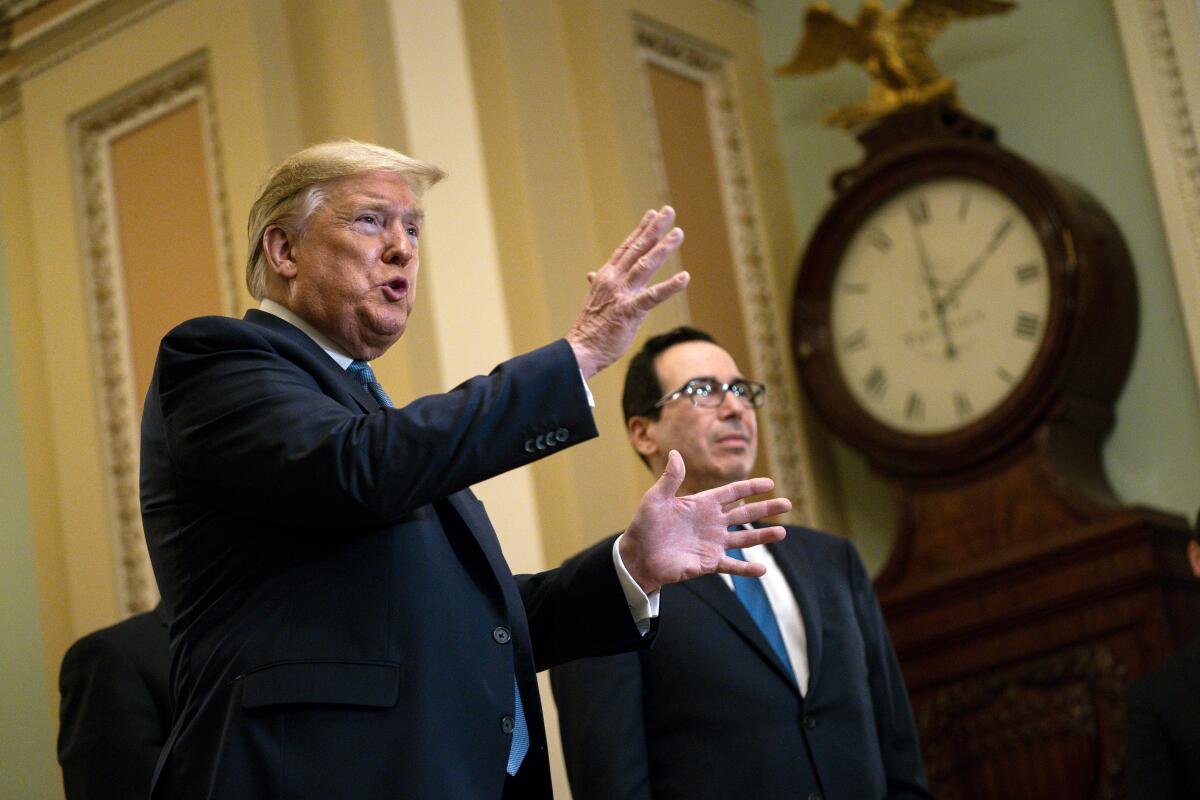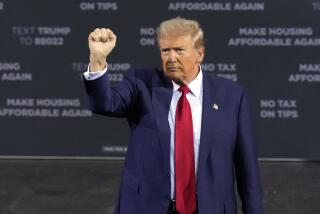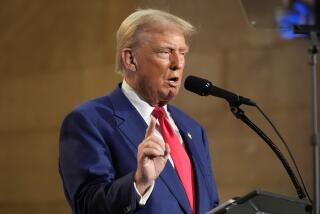Editorial: How not to protect the economy from a coronavirus downturn

- Share via
You can’t say we didn’t see this one coming. Scientists and policymakers have been aware for decades of the enormous threat to society of a viral pandemic. Yet still, it feels like the outbreak of a novel coronavirus caught the United States unprepared for some of the main challenges it poses.
A good example is the fact that the government doesn’t appear to have had a comprehensive plan in place for shoring up the U.S. economy in the face of the kind of sudden and unexpected disruption the virus is causing. President Trump went on national TV Wednesday night with some ideas for how to help affected people and businesses, mainly by offering more loans to small businesses and postponing tax payments. But he also called for a broader and less fitting response: asking Congress to cut payroll taxes.
Granted, politicians aren’t known for tackling problems early. There’s no reward from voters for taking painful but necessary steps. But there’s no political cost to having plans ready for possible emergencies, and the obligation to do so comes with the territory. In fact, some federal agencies do it obsessively (see, e.g., the Pentagon).
Despite steady advances in medical treatment and prevention over the years, pandemics remain a real and well-documented risk. We’ve had a number of scares and near-misses in recent years, including Zika in 2016, Ebola in 2014, MERS in 2012 and 2015 and SARS in 2003. Former Microsoft Chief Executive Bill Gates, a vocal advocate for global efforts to eliminate infectious diseases, told the Washington Post two years ago that he had warned Trump repeatedly about the country’s vulnerability to pandemic.
So you would have thought that the administration would have offered something more thoughtful than a payroll tax holiday — an idea that Trump also floated before the 2018 election because the U.S. economy wasn’t growing as fast as he’d hoped. It was an unnecessary and politically motivated proposal then, and it would be the wrong move now.
The federal government charges a 12.4% payroll tax on wages to pay for Social Security benefits, and an additional 2.9% to pay for Medicare hospital benefits. Half of the tax is collected from employers and half from workers; self-employed people pay the full amount. Because the payroll tax takes a sizable bite out of workers’ disposable income over the course of a year, cutting the tax could lead them to spend more, stimulating the economy.
That’s the theory. One drawback, though, is that the bump in take-home pay doesn’t feel as substantial when it’s spread out over the course of a year. And because the tax is calculated as a percentage of wages, a payroll tax holiday would give more money to higher-income Americans, who are more likely to tuck the extra dollars into savings than lower-income workers would be, dampening the stimulative effect. And unless the federal government diverted other income tax revenue into the Social Security trust fund, a payroll tax cut would only worsen the projected shortfall in the fund, threatening future retirees’ benefits.
Some Republicans aren’t convinced that any stimulus is needed, at least not until there’s proof of damage to the broader economy. But that’s like waiting to build boats until after the tidal wave on the horizon hits land. We can see the economic slowdown coming; the only questions are how bad it’s going to be and what are the best ways to mitigate the damage.
An alternative to cutting the payroll tax is to send a check for a few hundred dollars to every taxpayer. That sort of blanket stimulus has a certain appeal — it would cost the federal government very little to borrow the money needed. But we don’t know how long the outbreak will last or how deep the hit to the economy will be; nor do we know that the extra money will help the public overcome the fears that are dampening spending. So rather than just doling out aid broadly, it makes sense to target help to those most affected by the slowdown or by the preventive measures being put in place to slow the spread of the virus — for example, the small businesses that may need more time to repay government loans, or the job-seekers restrained by quarantines. Trump says he will seek some targeted aid, although he offered few details Wednesday.
The most important places to direct any new spending are the people and businesses that can slow the spread of COVID-19. Congress just approved more than $8 billion in emergency spending aimed mainly at healthcare expenses associated with the coronavirus, which was a good step. But it can go further, most notably by covering the cost of providing paid sick leave to workers who don’t have those benefits. The best way to stimulate the economy may be to give people confidence that it’s safe to go back to the lives they were leading before the outbreak disrupted them.
More to Read
A cure for the common opinion
Get thought-provoking perspectives with our weekly newsletter.
You may occasionally receive promotional content from the Los Angeles Times.










